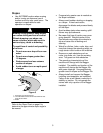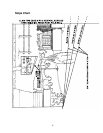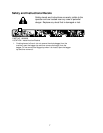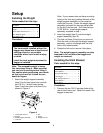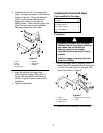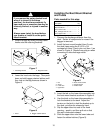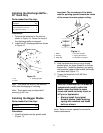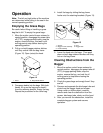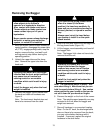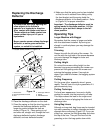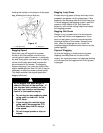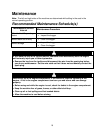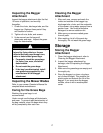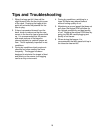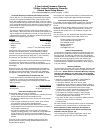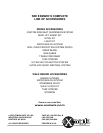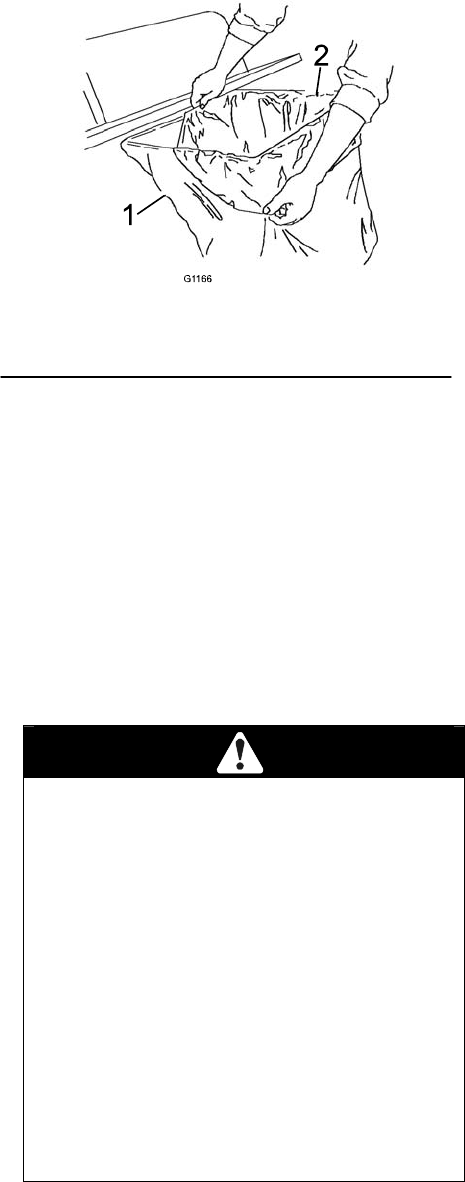
15
holding the handle on the bottom of the grass
bag, allowing the liner to slide out.
Figure 15
1. Cloth grass bag 2. Bag (liner)
Bagging Speed
Most often you will bag with the mower
throttle in the Fast position and drive at a
normal ground speed. However, in extremely
dry and dusty grass, you may want to slightly
reduce the throttle speed and increase the
ground speed of the mower. The bagging
system may plug if you drive too fast and the
engine speed gets too slow. On hills it may be
necessary to slow the mower ground speed.
This helps maintain the engine speed and
bagging efficiency.
As the bagger fills, extra weight is
added to the back of the machine. If
you stop and start suddenly on hills,
you may lose traction and steering
control or the machine may tip.
• Do not start or stop suddenly when
going uphill or down hill. Avoid
uphill starts.
• If you do stop the machine when
going uphill, disengage the PTO.
Then back down the hill using a
slow speed.
• Do not change speeds or stop on
slopes.
Bagging Long Grass
Excessively long grass is heavy and may not be
propelled completely into the grass bags. If this
happens, the discharge tube and chute may plug.
To avoid plugging the bagging system, mow the
grass at a high height of cut, then lower the
mower to your normal cutting height and repeat
the bagging process.
Bagging Wet Grass
Always try to cut grass when it is dry because
your lawn will have a neat appearance. If you
must cut wet grass, use the conventional side
discharge feature of the mower. Several hours
later, when the clippings are dry, install the
complete bagger attachment and vacuum up the
grass clippings.
Signs of Plugging
As you are bagging, a small amount of grass
clippings normally blow out the front of the
mower. An excessive amount of clippings blowing
out indicates that the bags are full or the system
is plugged.



